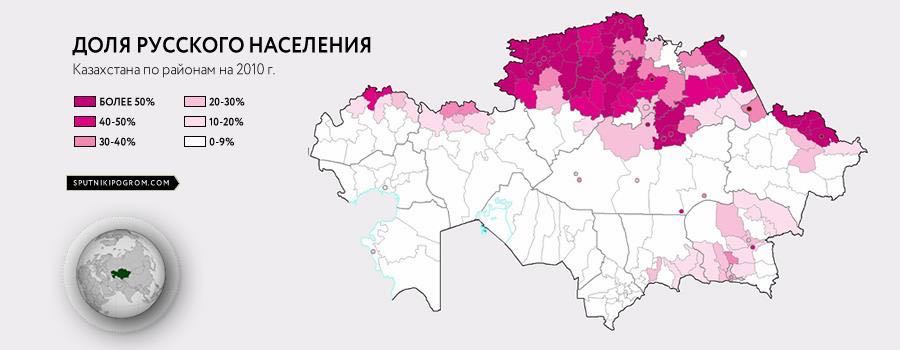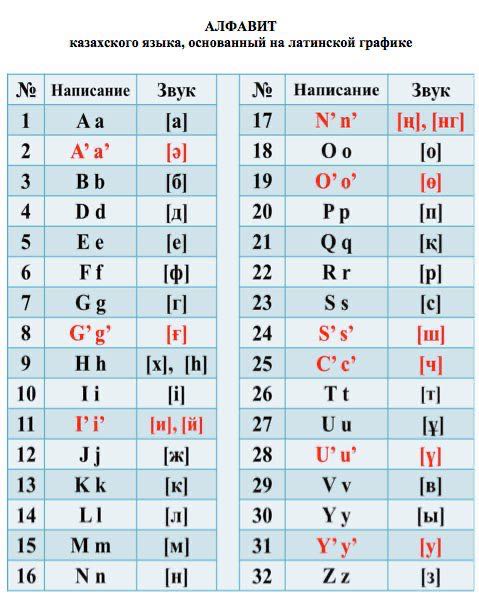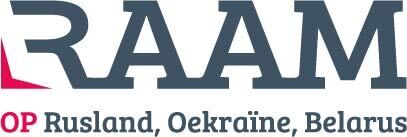With roughly 21 percent ethnic Russians, Kazakhstan inhabits the largest Russian minority of the five Central Asian republics. But this has so far not been a reason for any significant form of separatism or turmoil from the side of the Kazakhstani Russians. However, recent developments might turn the tide, writes Helena Arntz.

Ak Orda Presidential Palace, Astana. Picture Helena Arntz
By Helena Arntz
First President Nursultan Abishevich Nazarbayev has been preserving ethnic and religious harmony in the only Central Asian republic where the titular nationality did not constitute a majority in its newly independent republic after the collapse of the Soviet Union in 1991. With still roughly 21 percent ethnic Russians, Kazakhstan inhabits the largest Russian minority of the five Central Asian republics. Interestingly, this has so far not been a reason for an eruption in any significant form of separatism or turmoil from the side of the Kazakhstani Russians. However, recent developments might turn the tide. Last summer, President Nazarbayev officially announced to transfer the script for the Kazakh language, which is currently in Cyrillic, to Latin. This is noteworthy because it is the first and one of few moments where Nazarbayev takes a clear stance in favour of the ethnic Kazakhs. How has Nazarbayev managed to preserve the ethnic and religious harmony in multi-ethnic Kazakhstan and what does the transfer in script mean for the future stability in the republic?
Neo-Eurasianism
The stability in Kazakhstan has been successfully preserved by Nazarbayev who has been promoting the peaceful and tolerant features of the Kazakh people as a result of their nomad history, bringing different cultures and languages from east to west, north to south. The framework through which Nazarbayev has promoted this cultural inclusiveness, is neo-Eurasianism. The origins of the Eurasian idea can be traced back to the nineteenth century and were merely a product of Russian thinkers who started rethink the Russian identity.
Lev Gumilev (1912-1992) is considered to be one of the most famous Eurasianists. According to Gumilev, cultures are not hierarchically arranged and therefore neither superior nor inferior to each other. Thus, Eurasianism can incorporate all cultures, religions and nationalities on the Euro-Asian landmass. Eurasianists such as Gumilev aspired the creation of a Eurasian state which would be a combination of nations through a broader Pan-Eurasian nationalism. Considering Kazakhstan’s multi-ethnic composition, neo-Eurasianism served as a fitting platform to include all ethnicities living in Kazakhstan and integrate with several international partners.
Demographics
Even though Russia acknowledged Kazakhstan’s borders in 1992, Nazarbayev remained cautious towards its northern neighbour. Not only was Nazarbayev left with the task to preserve the territorial integrity of a state that had not existed independently before within its current borders, the ethnic Kazakh population became a minority in their own country. In 1989, the Kazakhstani population consisted of 39 percent ethnic Kazakh and roughly 45 percent Slavs (Russians, Ukrainians and Belarussians). Since independence, Kazakhstan’s demography has changed in favour of the ethnic Kazakhs that constituted roughly 70 percent of the population in 2017. However, the map shows that the majority of the Slavic population is still concentrated in the northern provinces of the country.

Distribution of ethnic Russians
International cooperation
In order to preserve Kazakhstan’s territorial integrity, Nazarbayev started to actively integrate Kazakhstan in several international and regional organizations, using neo-Eurasianism as a way to legitimize this integration. In this framework, Nazarbayev initiated the establishment of an Eurasian Economic Union in 1994. Nazarbayev presents Kazakhstan as the promotor of peace on world level and aims to reach peaceful cooperation with both the Western world and the Asian world. This use of neo-Eurasianism on the international level, also serves a domestic purpose. Nazarbayev continues to characterize the Kazakh people as tolerant (also one of the returning key concepts during the World Fair 2017 in Astana) and open towards other cultures. This all sounds very magical, but the use of Nazarbayev’s neo-Eurasianism is first and foremost pragmatic. As he uses neo-Eurasianism to consolidate domestic ethnic harmony in his multi-ethnic country.
The other way around, Kazakhstan’s domestic multi-ethnic composition enables Nazarbayev to take on a multivector foreign policy on the international level. Multi-vector foreign policy is characterized by a balancing act between the traditional ties with Russia and the economic weight of China and the European Union. Neo-Eurasianism is the platform which makes it possible for Nazarbayev to preserve and establish good relationships with multiple partners. Since independence, Kazakhstan has been an active member of several international organizations as it was responsible for the 2010 OSCE chairmanship and chairmanship of the Islamic Conference in 2011. There are several reasons for Nazarbayev’s multi-vector foreign policy. One is to circumvent Russia’s hegemony in Central Asia by asserting itself as a regional and even global player. Secondly, to crystallize a Kazakhstani national identity.
Domestic harmony
Kazakhstan has besides a multi-ethnic composition, also a poly-confessional composition. In order to prevent ethnic strife, Nazarbayev values Kazakhstan’s secular character. However, despite Kazakhstan’s secular character, the Kazakhstani government has been increasingly determining what is ‘good’ and ‘bad’ Islam. In 2011, the government created the Ministry of Religious Affairs and Civil Society. This Ministry is tasked with the prevention of religious extremism. In the same year, Nazarbayev set up the Agency for Religious Affairs, which operates under the President and aims to strengthen Astana’s control over the religious sphere. The increasing role of traditionalism, i.e. home-grown values versus imported extremist Islam from abroad, is not something that only appeared in Kazakhstan. Something similar has been happening in Russia in the last years, where the Russian Orthodox Church has a saying in what is ‘good’ and what is ‘bad’ moral in society. Subsequently, ‘good’ moral is linked to stability and ‘bad’ moral is dangerous for the peaceful existence of a society. For Kazakhstan this shows ambiguity, for the secular government is incorporating the Islam as a part of the national identity.
The same ambiguity goes for the establishment of the Assembly of the People in 1995. The President is the lifelong Chairman of the Assembly which in 2015 consisted 398 members, representing the 140 different ethnicities living in Kazakhstan. The Assembly has its Cultural Centres at the provincial level. During Kazakhstan’s 2010 OSCE Chairmanship, the Assembly was portrayed as the ideal of the multi-cultural society and showed Kazakhstan’s unique approach to interethnic harmony. Three important signs, however, show that the Assembly is merely a façade and in fact helps consolidate an ethnic Kazakh identity.
The first sign is that the Assembly does not have any juridical status, legislative powers or political influence. It seems that the Assembly’s main objective is merely to show loyalty to the president and his policy. This, for example, became clear when Nazarbayev announced the transfer from the Cyrillic to the Latin alphabet and all the Cultural Centres expressed their support to the President’s decision. Another example is that the Cultural Centres launched several projects in the framework of ‘big country – big family’ celebrations (2015) to celebrate 25 years of Kazakhstan’s independence and Kazakhstan’s modernization plans in 2012. What these projects, however, did not include were specific ethno-cultural celebrations. Secondly, the minorities are not proportionally represented in the Assembly. The small minorities are in general overrepresented and the Russian population is systematically underrepresented. Kazakhstani authorities respond that the different ethno-national groups do not serve as representatives of their own group, but as representatives of the multi-ethnic character of society. Thirdly, the Assembly has been given an important role in the promotion of the state language, the Kazakh language. As the Assembly is assigned with the task to preserve the different languages of the different ethno-national groups, but more importantly, its task is to further develop and consolidate the use of the state language in society.
It seems that Nazarbayev has used the Assembly as a platform to show Kazakhstan’s neo-Eurasian tolerance towards its multi-ethnic composition, both on an international as domestic level. Whilst in reality, the Assembly is used to implement policy that favours only the ethnic Kazakhs.
This brings me to one of the most interesting, but also difficult to prove appearances in Kazakhstani society. Namely, the concept of ethnic Kazakh nationalization. The concept of ‘nationalization’ comprises the dynamic process of nationalist projects and processes that are implemented by the state. Ethnic Kazakh nationalization thus entails different ways by which the state has enhanced the cultural, linguistic, social and political position of ethnic Kazakhs within Kazakhstan. Due to the high number of Russians, Nazarbayev cannot openly implement policy that favours ethnic Kazakhs. Therefore, one would have to read between the lines to discover that such a policy of favouring is present and has intensified.
Favouring of ethnic Kazakhs
The first policy concerns the repatriation of ethnic Kazakhs, or Oralmanar (Kazakh for returnees). After the collapse of the Soviet Union, Kazakhstan experienced a dramatic population loss. Between 1991 and 2004, more than 3 million people emigrated from the country, mostly Slavic people and Germans. Nazarbayev did not do anything to counter this massive exodus, instead, the displacement of Russians by Kazakhs had accelerated in the 1990s. To counter the demographic imbalance, Nazarbayev approached his 5 million compatriots living abroad, to return to their homeland.
The Oralmanar in Kazakhstan’s neighbouring countries have preserved the traditional aspects of the Kazakh culture, traditions and lifestyle for they were not that strongly affected by russification as for example the ethnic Kazakhs in Kazakhstan’s northern provinces. To facilitate their repatriation, the government set out annual quotas for the number of Oralmanar that have the right to receive financial support, housing and even free passage of livestock to the new place of residence. The Oralmanar that fall within the quota are only allowed to settle in regions that are appointed by the government. These regions have altered several times. In 2016, the presidential administration changed the regions of settlement to the northern, eastern and Atyrau region. Interestingly, these regions are mainly inhabited by Slavic people and have the highest emigration numbers. In government plan Strategy «Kazakhstan 2050» (2012), Nazarbayev explains that the border regions should become more attractive places to live.
Till today, Oralmanar from neighbouring countries such as China, Mongolia and Uzbekistan prefer to be settled in the southern provinces where the Kazakh language is predominant and the climate is better. Instead, following the 2016 change in regions, these Oralmanar are allocated to the northern provinces of Kazakhstan, where they experience difficulties adjusting to language, culture and climate. Not only does the government try to restore the ethnic imbalance in the northern regions by allocating Oralmanar, also students from the south are encouraged to study in the north, hoping they would settle permanently. Thirdly, the transfer of the capital from Almaty in the south, to the former city of Akmola in the north in 1997, resettled ethnic Kazakhs from the south to the Russian dominated north. Keep in mind that ethnic Kazakhs were dominating the government jobs.
The alphabetic switch
The second sign of ethnic Kazakh nationalization, that no longer follows implicit rules, was Nazarbayev’s official announcement to transfer from the Cyrillic to the Latin alphabet during the fifth Kurultai in the summer of 2017. Several Russian news portals have called the move an attempt to “exit the Russian world” or label the transfer as discriminatory towards the large Russian population in Kazakhstan.
 |
New transcription rules
The switch to the Latin script shows the growing influence of the Kazakh national patriots in the government. After 1991, the dominant language in Kazakhstan was Russian and Nazarbayev had to constantly balance between the use of Kazakh and Russian. Promoting the use of Kazakh, would automatically downgrade the use of Russian. Currently, Kazakh is the official state language, but Russian is allowed on an equal level when necessary. Already in the last decade the Kazakh language has been taking up a more central role in the Kazakh identity. In 2012, Nazarbayev called the Kazakh language “the crown jewel of our state’s sovereignty”. For Nazarbayev it is a rare occasion to show such clear official ethnic Kazakh nationalization policy, what does this mean for the neo-Eurasian platform that has preserved the interethnic and inter-religious harmony in Kazakhstan for the last 25 years?
The reasoning behind the transfer can be found in the growing number of Kazakh national patriots. These national-patriots believe the Kazakh language continues to be marginalized and the majority of them favours the transfer. For it would be a symbolic way to end the Russian colonial era and focus on a new pan-Turkish identity. Despite Nazarbayev’s explanations for the transfer, who argues it would simplify participation for Kazakhs on world level, this switch shows a realistic attempt of the Kazakhstani authorities to geopolitically distance itself from Russia. Whereas shortly after independence, Nazarbayev penalized or absorbed the National-Patriots into the government, the last decade has shown a growing influence of the national-patriots within the government.
At the present we are left with the question what this means for Kazakhstan’s relationship with Russia. Kazakhstan and Russia consider each other as historic, geopolitical and economic allies. Nonetheless, the discriminatory language policy towards Russian speakers in Ukraine, has been one of the major reasons for Russia’s unexpected intervention in the country. A growing influence of the national-patriots in the government and a 78 year old President without known succession, forces us to closely follow the developments in the yet most stable country in Central Asia.
Helena Arntz studied History (BA) and East European Studies (MA) at the University of Amsterdam. During her studies she studied one academic year at Saint-Petersburg State University and was the intern at the Embassy of the Kingdom of the Netherlands in Astana during EXPO 2017.
This is a summary of the MA-thesis of Helena Arntz. Here the full thesis.

